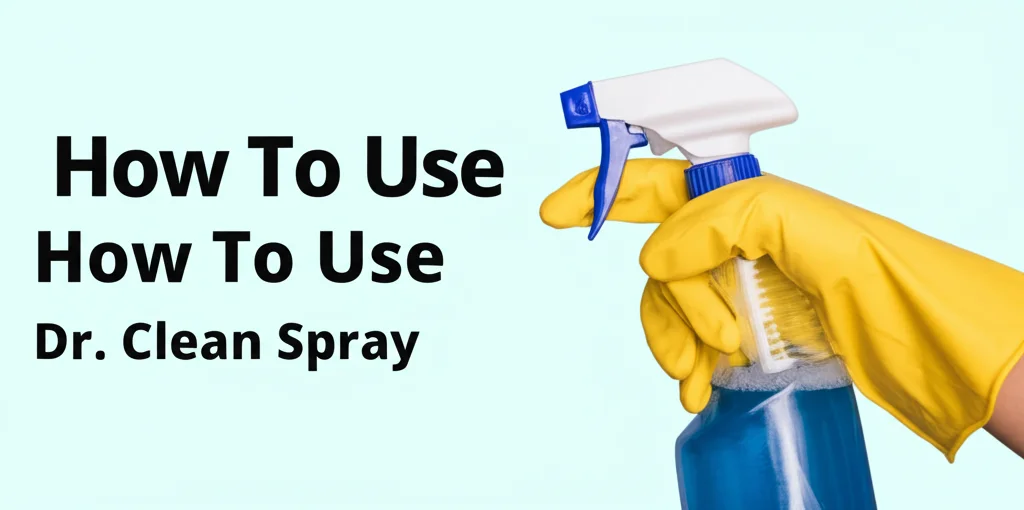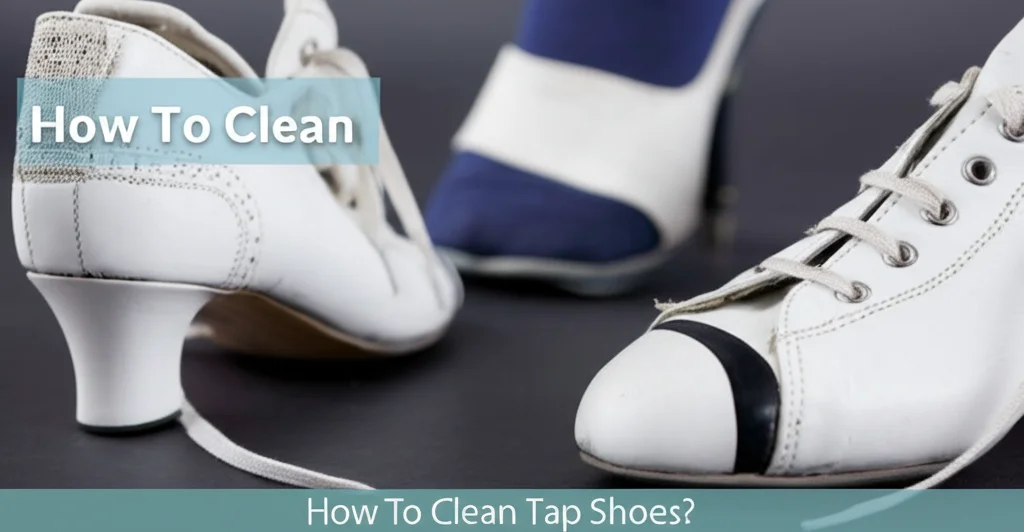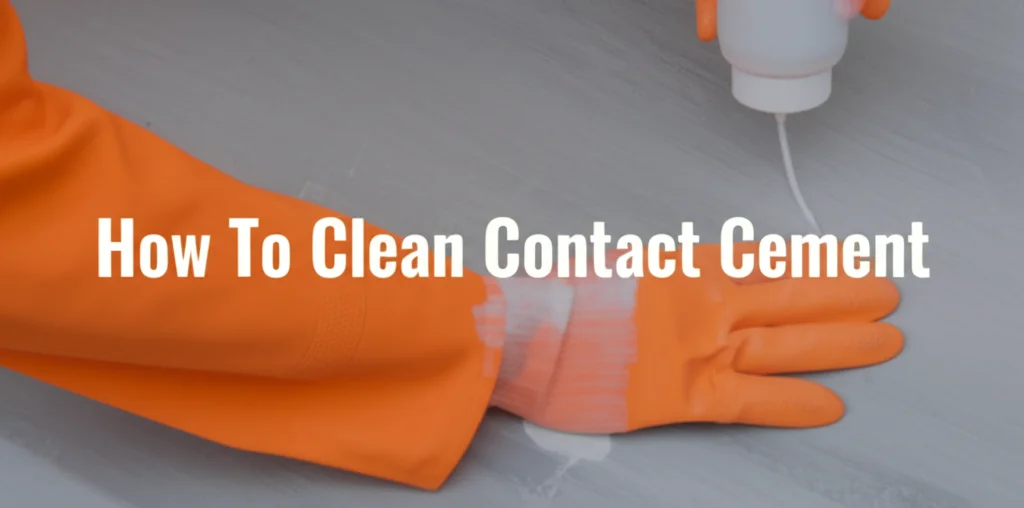· Cleaning Guides · 7 min read
How To Use Dr. Clean Spray

Dr. Clean Spray: Your Guide to a Sparkling Clean Home
Ever stared at a mess and wished for a quick, easy solution? Dr. Clean Spray promises just that – a powerful cleaning agent designed to tackle grime on various surfaces. This article will walk you through everything you need to know about using Dr. Clean Spray effectively, from preparing the area to achieving the best results. We’ll cover which surfaces are safe, the proper application techniques, and important safety precautions. Let’s dive in and discover how Dr. Clean Spray can simplify your cleaning routine and leave your home looking its best.
Takeaway:
- Always test Dr. Clean Spray on an inconspicuous area first.
- Use a microfiber cloth for optimal cleaning and streak-free results.
- Allow the spray to dwell for a few minutes before wiping.
- Ensure adequate ventilation during and after use.
What is Dr. Clean Spray and What Does It Do?
Dr. Clean Spray is an all-purpose cleaning solution formulated to dissolve dirt, grease, and grime from a wide range of surfaces. It’s designed to be a convenient and effective way to clean your home without harsh chemicals. The spray works by breaking down the bonds between the dirt and the surface, making it easier to wipe away. Many users appreciate its versatility, as it can be used in the kitchen, bathroom, and throughout the house.
Preparing to Use Dr. Clean Spray
Before you start spraying, a little preparation goes a long way. This ensures you get the best cleaning results and protect your surfaces. First, remove any loose debris from the area you plan to clean. This could include crumbs, dust, or larger particles. Next, gather your supplies: Dr. Clean Spray, a clean microfiber cloth (or several!), and potentially a bucket of clean water for rinsing if needed. Finally, and crucially, always test the spray in an inconspicuous area to ensure it doesn’t damage or discolor the surface.
Why Testing is Essential
Testing Dr. Clean Spray before full application is a non-negotiable step. Different materials react differently to cleaning solutions. A quick spray and wipe on a hidden spot – like under a kitchen counter or inside a cabinet – can prevent costly damage. Wait a few minutes after testing to observe any adverse reactions, such as discoloration or etching.
Surfaces You Can Clean with Dr. Clean Spray
Dr. Clean Spray boasts versatility, but knowing its limitations is key. It’s generally safe for use on many hard, non-porous surfaces. These include countertops (laminate, sealed granite), stainless steel appliances, bathroom tiles, sealed hardwood floors, and vinyl flooring. However, avoid using it on unsealed wood, marble, or delicate fabrics. Always check the product label for a comprehensive list of compatible surfaces.
Specific Surface Considerations
- Stainless Steel: Spray directly onto the surface and wipe with the grain to avoid streaks.
- Tile: Dr. Clean Spray is excellent for removing soap scum and grime from tile surfaces.
- Laminate: Use a lightly dampened cloth to avoid excessive moisture. You can find more information on laminate floor care here.
- Sealed Granite: While generally safe, avoid prolonged contact and rinse thoroughly.
How to Apply Dr. Clean Spray Correctly
Proper application is crucial for maximizing the cleaning power of Dr. Clean Spray. Hold the bottle 6-8 inches away from the surface and spray a light, even mist. Avoid saturating the area, as excessive moisture can damage some surfaces. Let the spray dwell for a few minutes – typically 3-5 minutes – to allow it to break down the grime. Then, wipe clean with a clean microfiber cloth, using a circular motion. For stubborn stains, you may need to repeat the process or apply a little more pressure.
The Power of Microfiber Cloths
Microfiber cloths are your best friend when using Dr. Clean Spray. Their tiny fibers lift and trap dirt and grime more effectively than traditional cloths. They also leave surfaces streak-free and lint-free. Be sure to use a clean cloth for each surface to avoid spreading dirt around. You can also find helpful tips on removing residue from carpets here.
Tackling Tough Cleaning Challenges
Sometimes, everyday messes require a little extra effort. Dr. Clean Spray can handle many tough cleaning challenges, but a strategic approach is key. For greasy stovetops, let the spray dwell for a longer period – up to 10 minutes – before wiping. For soap scum in the bathroom, spray liberally and use a non-abrasive scrub brush to loosen the buildup. If you’re dealing with hard water stains, consider combining Dr. Clean Spray with a little vinegar for added cleaning power.
Removing Stubborn Stains
- Grease: Allow extended dwell time and use a degreasing microfiber cloth.
- Soap Scum: Combine with a non-abrasive scrub brush for effective removal.
- Hard Water Stains: Mix with vinegar for enhanced cleaning.
- Baked-on Food: Soak the area with spray and let it sit overnight before scrubbing.
Safety Precautions When Using Dr. Clean Spray
While Dr. Clean Spray is designed to be user-friendly, safety should always be a priority. Always wear gloves to protect your skin, especially if you have sensitive skin. Ensure adequate ventilation by opening windows or using a fan. Avoid spraying the product directly into your eyes or mouth. If contact occurs, rinse thoroughly with water and seek medical attention if necessary. Keep the bottle out of reach of children and pets. You can also learn more about cleaning grout without scrubbing here.
Proper Storage of Dr. Clean Spray
Store Dr. Clean Spray in a cool, dry place away from direct sunlight. Keep the bottle tightly closed when not in use to prevent evaporation and contamination. Never mix Dr. Clean Spray with other cleaning products, as this could create hazardous fumes. Always refer to the product label for specific storage instructions.
Frequently Asked Questions (FAQs)
Q: Can I use Dr. Clean Spray on my wood furniture?
A: It’s generally not recommended to use Dr. Clean Spray on unsealed wood. The spray could damage the finish. Always test in an inconspicuous area if you’re unsure, and consider using a wood-specific cleaner instead.
Q: Is Dr. Clean Spray safe for pets and children?
A: While Dr. Clean Spray is formulated to be relatively safe, it’s important to keep it out of reach of children and pets. Avoid spraying in areas where they may come into contact with the wet surface.
Q: How often should I clean with Dr. Clean Spray?
A: The frequency of cleaning depends on the area and how often it’s used. For high-traffic areas like kitchens and bathrooms, cleaning a few times a week is recommended.
Q: Will Dr. Clean Spray leave streaks on my stainless steel appliances?
A: If applied correctly, Dr. Clean Spray shouldn’t leave streaks. Spray a light mist and wipe with the grain of the stainless steel using a clean microfiber cloth.
Q: Can I dilute Dr. Clean Spray with water?
A: While it’s generally not necessary, you can dilute Dr. Clean Spray with water for lighter cleaning tasks. However, this may reduce its effectiveness on tougher stains.
Conclusion: Enjoy a Cleaner Home with Dr. Clean Spray
Dr. Clean Spray is a versatile and effective cleaning solution that can simplify your household chores. By following the tips and precautions outlined in this guide, you can achieve a sparkling clean home without damaging your surfaces. Remember to always test the spray before full application, use a microfiber cloth, and ensure adequate ventilation. With Dr. Clean Spray, maintaining a clean and healthy living environment has never been easier. So, go ahead, grab your bottle and experience the difference! For more cleaning tips and tricks, explore our other articles on Beacleaner.com.




